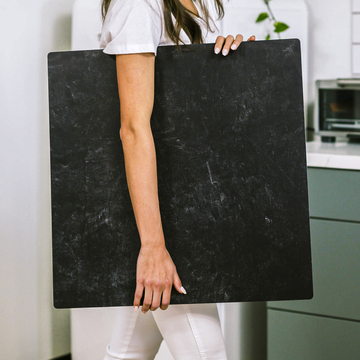Every product photographer has reached for a plain white backdrop at some point. It’s a staple-the visual blank slate that makes your product the main event. But what if that familiar, unassuming white surface holds a secret edge? If you’re building a business on places like Etsy, Shopify, or just want your work to feel crisp and intentional, understanding the nuances of the plain white backdrop will set you apart from the crowd.
This isn’t just about lighting or cutting out your backgrounds in Photoshop. The real magic lies in the details that most beginners overlook-how a “pure white” interacts with your subject, your light, and even your brand’s vibe. Let’s uncover what every serious creator should know about this so-called blank canvas.
Not All Whites Are Created Equal
At a glance, white is white… right? In reality, every backdrop material interacts with light in a unique way. Some surfaces return too much yellow, others a touch of blue. Archival boards, acrylic, vinyl, and premium photo surfaces each bounce or absorb colors a little differently. This is all about spectral reflectance-the hidden science behind true color representation in your photos.
If you’ve ever noticed that your handmade earrings turned slightly yellow, or your red mug looked a bit magenta, chances are your “white” backdrop is the culprit. Over time, these little color shifts pile up, making your shop’s gallery feel inconsistent-even if your lighting and camera settings never change.
- Color Accuracy: Premium “neutral” backdrops deliver cleaner, more honest color. This is especially important if your brand or customers care about precise shades.
- Smoother Workflow: A good white backdrop saves time in editing-no endless zapper tool or color correct brush to “fix” strange tints.
Matte, Glossy, or Satin? Picking More Than Just a Color
Beyond color, the finish of your backdrop alters how light scatters in your scene. Glossy poster board might seem luminous in person, but under a studio light, it flares, glares, and throws off hard reflections. That can spell disaster for reflective or light-colored products.
Matte surfaces often reign supreme for product shots. They absorb and scatter light gently, giving you soft edges and subtle shadows. But don’t ignore satin finishes; they add a touch of depth, especially for items like glass or packaging that benefit from just a hint of glow.
- Shoot a reflective object-like a spoon-on your chosen white. Notice any halos or odd lines? Switch to a matte surface for cleaner results.
- For textured or tactile goods, ensure your backdrop’s texture isn’t visible in macro shots. Premium boards are engineered for this exact need.
White Point: Where Science Meets Art
You might be tempted to make your background “perfect” by editing everything to pure white (255,255,255). But that can actually rob your product photos of context and depth. Products end up looking like they’re floating with nowhere to “sit.”
Instead, try this: keep the backdrop nearly-but not completely-white. Around 245-250 on the brightness scale lets natural shadows form, outlining your product in a way that feels true and inviting. Get this right in-camera, and you’ll notice your photos look less artificial and more professional-no over-editing needed.
Microtexture: The Macro Photographer’s Blind Spot
If you regularly shoot small items (think jewelry, ceramics, or tiny food), your backdrop’s surface texture becomes doubly important. Inexpensive foam core and paper often reveal unwanted fibers or bumps under macro lenses. Those little imperfections can hijack the attention you want on your product.
Look for backdrops that specifically advertise an ultra-smooth finish for close-up work. Your product should always be the visual star, never your background’s texture.
The Emotional Power of White: More Than Minimalism
You may think that a white backdrop feels “clean” and modern, which it does. It signals transparency, trust, and order. But for solopreneurs, artists, and handmade businesses, a touch of visible texture or even a warm off-white can send the message that your goods are genuine and approachable-like they were shot in your own studio or kitchen, not a sterile catalog warehouse.
- Try A/B testing your photos: one on pure white, one on a soft, textured white.
- See what your customers respond to-the subtle warmth could give your brand the edge in crowded marketplaces.
Your White Backdrop Master Checklist
- Test for Color Cast: Use a gray card or color checker under your lights. Small differences matter!
- Pick the Right Finish: Matte is great for most, but don’t be afraid to experiment with satin if you're after a particular look.
- Control in Camera: Don’t rely solely on post-processing. Adjust white balance and exposure for best results.
- Inspect Texture: Especially vital for macro work and close-ups.
- Match Your Brand: Decide if a perfectly clean studio look or a slightly softer vibe better fits your story.
Final Thoughts: Mastery in the Margins
It’s easy to see the plain white backdrop as the least interesting part of your photo kit. But as every experienced creator knows, simplicity-done well-takes thought and care. By dialing in the details, you can transform this simple surface into a secret weapon. Your products will pop, your images will feel intentional, and your brand will build trust at a glance. Never mistake “plain” for basic; with the right white backdrop, it’s pure possibility.


